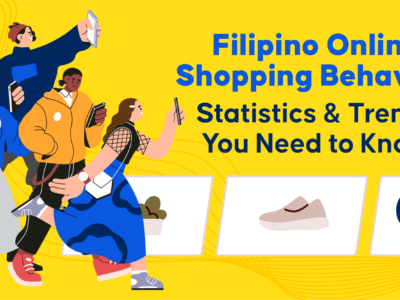With the arrival of the internet and advancements in mobile technology, the consumer decision-making process is not as linear as it once was.
Consumers can now read dozens of reviews and conduct deep research into products before purchasing. Traditional marketing strategies are no longer enough, the days of flicking through local newspaper ads are gone. Instead, a more personalized customer experience that’s both exciting and engaging is now favored, and 93% of marketers now see effectiveness in interactive content.
When it comes to the decision-making process, consumers exhibit practical and emotional needs. Before any money exchanges hands, the consumer goes through some crucial decision-making stages. Businesses must focus on these to provide consumers with extra value and convert them into buyers.
What is the Consumer Decision Making Process?
In 1910, John Dewey claimed there were five stages to the consumer decision-making process. Whilst inventions like the internet have expanded the internal and external factors that affect this process, the theory remains. In a nutshell, the consumer decision-making process looks like this:
- Problem or need recognition – The consumer decision process begins with the need recognition stage, triggered when a consumer comes across either an internal stimuli, such as hunger or excitement, or external stimuli like ads or recommendations from friends.
- Researching the chosen product or service- the consumer begins to search descriptions and reviews of the product or service. This step has evolved considerably in recent years thanks to the internet.
- Considering other options – this is a more evaluative stage where the user begins to weigh up the pros and cons of their potential purchase against other options. They must feel they’re making the best choice.
- Purchase time – the consumer now decides whether to purchase or not.
- Post-purchase evaluation – the consumer evaluates their purchasing decision. Are they satisfied? Was it worth the money? Would they recommend or buy again?
An awareness and understanding of the consumer decision-making process is crucial for turning those on-the-fence prospects into buyers.
With many businesses now operating online, the possibilities for collecting deep user insights to implement more targeted marketing strategies make mastering the consumer decision-making process more valuable than ever. Thankfully, customer experience analytics make it easier than ever to collect and analyze customer data to create insights.
Now it’s time to take a deeper look at the consumer buying process as it functions today. Before you get your sales engagement platform at the ready, we’ll learn how to turn those prospects into clients by looking into the factors that influence their purchase decision process.
5 Factors That Influence the Purchase Decision Process
Humans are complex creatures, and so is their thought process when it comes to making a purchase. Here are the factors affecting our purchase decision process.
1. Economic
Making a good purchasing decision requires thorough consideration of economic factors. These aspects include the buyer’s financial situation, income level, and the perceived value of the product or service in relation to its cost. Economic factors also encompass external influences like inflation, interest rates, and economic stability, which can impact a consumer’s buying power and choices.
2. Functional
Consumers often consider attributes such as product features, performance, reliability, and function during the buyer decision process. In other words, a product that fulfills its intended purpose is crucial for a satisfying purchase decision.
3. Personal
Personal factors can heavily influence the consumer purchase decision process, as people tend to select products or services that align with their self-image and values. These involve the buyer’s individual preferences, personality traits, lifestyle, and demographics.
4. Psychological
Psychological factors delve into the consumer’s thoughts, motivations, emotions, and perceptions during the decision-making process. Understanding how these factors shape the consumer buying decision process is essential for crafting effective marketing strategies that resonate with your audience’s emotions.
5. Cultural
Culture— social norms, customs, and cultural values—plays a significant role in shaping consumer preferences and behaviors. It’s vital to be aware of cultural influences that have an impact on the decisions of the target market, as they can vary widely across different regions and demographics.
5 Steps of the Consumer Decision Making Process
The consumer decision-making process is a dynamic and multi-faceted journey comprising five distinct levels. When you understand and navigate these steps of the consumer decision making process, you can align your strategies to meet consumer needs effectively.
Stage 1: Problem or Need Recognition
The customer’s journey begins with a problem or needs recognition.
Essentially, your prospect recognizes a problem, and they need a product or service to solve it. Needs are triggered by internal and external stimuli.
Internal stimuli refer to personal perceptions felt internally and are linked with emotion. Obvious examples include thirst and hunger.
External stimuli refer to outside influences such as advertisements and spoken testimonials. An example could be recognizing you need a Christmas tree after seeing a seasonal advertisement.
Mastering this step from a marketing perspective requires understanding the specific needs of your target market. The good news is that you can influence your prospect’s decisions at this early stage. Let’s look at two ways to do this.
Find customer search engine trends
There are an estimated 5.6 billion Google searches per day, so your prospects will probably begin searching for what they need here. This gives you an opportunity to understand their needs by researching the keywords they use.
For example, you have an electric bicycle business and want to branch out. Keyword research indicates your target market often searches for terms like ”Are electric bicycles safe?” or “How to avoid crashing my electric bicycle.” These searches indicate safety as a primary concern for this group.
These findings can then inform your strategic marketing decisions. In this example, you would market the bicycle’s SEO content around its safety features.
Suitable tools for collecting search trends include Google Trends and Quora.
Ask Direct Questions to Customers
Simply asking customers direct questions regarding your product or service is an effective method for gaining insights and measuring engagement. But how is it done?
Surveys and focus groups are good options for how to measure customer satisfaction and also ask important questions. These insights will aid your understanding of the ideal consumer’s needs and expectations when it comes to marketing.
Stage 2: Researching the Required Product or Service
By this point, the consumer has decided they need a product or service to satisfy a specific need.
This is where they will begin to research your product to find whether it solves their problem and satisfies any other expectations.
Essentially, the prospective consumer begins searching your product and if things have worked, they should be led to yours. It pays here to be aware of some of the top reasons consumers trust brands (see chart above). Aiming to cover these will help ensure consumers choose you from the off.
Invariably, however, this stage will merge into the next stage of the consumer decision-making process.
Stage 3: Considering Other options
The importance of optimizing your online content to make your ecommerce store stand out is crucial at this point.
For example, if a prospect searched “Safest bicycles US 2021” then you need to optimize your website for local searches so that they find you. Unfortunately, this is also the stage where consumers will begin to consider alternatives. So keeping on top of your SEO is crucial.
Another effective way of raising your product above others is to use user-generated reviews. Positive reviews are great for your brand, but they’ll also make your online store more visible in search engine results by supplying a constant source of keywords and relevant material.
Stage 4: Purchase time
This crucial step is where prospects make that all-important decision: will they buy?
At this point, nothing is guaranteed and prospects may choose against your product or service. In fact, there are some common factors that put consumers off at this stage, including:
- A poor checkout experience plagued by bugs and broken buttons.
- Too many choices to pick from.
- Delivery fees are too high.
Don’t let these issues turn would-be customers away. But to prevent being left to deal with angry users, you should:
- Ensure your checkout process is streamlined and 100% working.
- Include user reviews on the checkout page to reaffirm why your product is the better option.
- Consider free or reduced shipping for new customers.
Use a good POS system to gather as much data as possible as you finally get your prospects to the point of sale. Although your prospect has now parted with their cash, the decision-making process isn’t quite finished just yet.
Stage 5: Post-Purchase Evaluation
Now that the prospect has become a post-purchase customer, they will reflect on their buying decision.
If your customer is dissatisfied in any way, their post-purchase evaluation may lead them to seek better alternatives going forward and leave you negative reviews.
To prevent post-purchase blues follow these handy hints.
Collect feedback
Collecting and analyzing customer feedback is a great way to gain insights into your product and business. What are some of the common issues, if any? Would buyers recommend the product to others? And most importantly, how to manage customer feedback effectively?
Collecting feedback shows you value your customer’s opinions and will use these to inform future decisions.
Some direct ways to reach out to consumers during the post-purchase stage include:
- Email marketing
- Focus groups
- Collecting and analyzing emotional analytics
- Social listening tools
- Explore customer review websites
Develop Customer Relationships
Gaining new customers is only the start. To keep them on board, you need a top customer retention strategy to help nurture a positive relationship between the customer and your brand.
Customer loyalty programs and other incentives will make consumers more likely to come back. They’re also more likely to recommend your product or services to others. You can create a digital business card and add a loyalty program code that they can use for future purchases.
Consumer Decision-Making Process Example
Now that we’ve explored some strategies for the consumer decision-making process, let’s look at a real-world example:
Stage one – David’s washing machine isn’t working properly. It’s too old to repair so David decides it’s time for a new washing machine.
Stage two – David searches online for the latest washing machines to see what’s available.
Stage three – with a better understanding of the features of modern washing machines, David narrows it down to two options and considers their features and value for money.
David notices his one choice has poor reviews, including an issue with the display. The second option is more expensive, but David noticed it has five-star reviews and no reported issues.
Stage four- because David needs a top-quality washing machine without issues, he decides to purchase the more expensive option with good reviews.
Stage five – six months have passed and David is happy with his purchase. In turn, David now leaves a review of his own for the benefit of future purchasers.
Harnessing Conversion Rate Optimization in the Philippines
Whether it’s a new cloud-based service aimed at call centers for small business, or a shiny new kitchen appliance, consumers will inevitably embark on a similar decision-making process.
Understanding this process from start to finish is key if you intend to attract more prospects and convert them into buying customers. By breaking down the consumer decision-making process into the above steps, you will start to understand how to get the most out of your marketing efforts.





